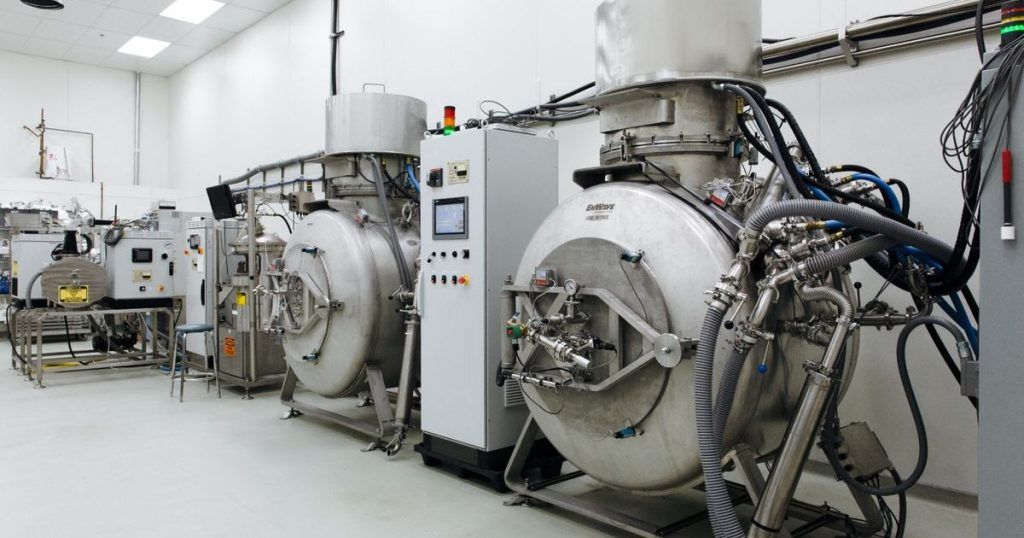Understanding Industrial Drying Equipment: Basics, Tips, and Expert Insights
Industrial drying equipment plays a critical role in modern manufacturing and processing industries. Whether you're dealing with food, chemicals, pharmaceuticals, textiles, or minerals, proper drying methods improve efficiency, product quality, and energy use. This guide provides an educational overview of what industrial dryers are, why they matter, and how regulations and technology have shaped their use.
Industrial drying equipment is used to remove moisture or solvents from materials during production processes. Unlike domestic dryers, these machines are specifically designed for high-volume, continuous operations across various sectors. Drying improves product stability, enhances quality, and ensures materials meet safety and packaging standards.

There are several types of industrial dryers based on application and technology, including:
-
Convection dryers (e.g., rotary dryers, fluid bed dryers)
-
Conduction dryers (e.g., drum dryers, vacuum dryers)
-
Radiation dryers (e.g., infrared dryers, microwave dryers)
-
Freeze dryers (used in pharmaceuticals and sensitive food products)
Each type has a specific purpose depending on the material's characteristics like heat sensitivity, moisture content, and desired final quality.
Why It Matters: Importance of Industrial Drying Equipment
Industrial drying equipment is essential across multiple industries due to its role in:
1. Product Quality
Moisture can lead to spoilage, microbial growth, or chemical instability. Efficient drying ensures longer shelf life and consistent quality.
2. Energy Efficiency
Modern dryers help reduce energy consumption by recycling heat, using smart sensors, and optimizing drying cycles. This is critical for reducing operating costs.
3. Safety and Compliance
In industries like pharmaceuticals or chemicals, improper drying can pose safety risks or regulatory violations. The right equipment prevents contamination and ensures compliance with hygiene and safety standards.
4. Industry-Wide Applications
-
Food: Drying for fruits, vegetables, spices, and dairy products
-
Pharmaceuticals: For powders, granules, and active ingredients
-
Textiles: Moisture removal post-washing or dyeing
-
Construction: Drying cement, sand, or plaster
-
Paper & Pulp: Removing water from paper products
Recent Updates and Industry Trends (2024–2025)
The industrial drying sector has seen significant innovation in the last year, especially in automation, energy use, and sustainability.
Key Trends:
-
Smart Drying Systems: Use of sensors and IoT-enabled controls to optimize drying time and energy consumption.
-
Microwave and Infrared Technology: Rapid drying with minimal energy use, suitable for sensitive products.
-
Waste Heat Recovery: Reusing exhaust heat to preheat incoming air, common in food and textile sectors.
-
Green Manufacturing: Eco-friendly dryers and low-emission systems are in demand due to carbon reduction goals.
According to a 2025 industry report by MarketsandMarkets, the global industrial drying equipment market is projected to reach USD 7.5 billion by 2028, driven by growth in food processing and chemical industries.
Regulatory Landscape: Standards and Compliance
Industrial drying processes are subject to a range of national and international regulations, especially in sectors like food, pharma, and chemicals.
Major Regulations to Know:
-
FDA (U.S.) – Requires GMP-compliant drying systems for food and pharmaceutical production.
-
OSHA (U.S.) – Sets workplace safety standards for thermal operations and emissions.
-
ISO Standards – ISO 9001 and ISO 14001 are common for quality and environmental management.
-
EU Directives – The Machinery Directive and ATEX Directive apply to dryers in explosive or flammable environments.
-
India’s BIS Standards – For food processing and agro-equipment quality control.
Governments in countries like Germany, Japan, and India are offering tax credits and subsidies for companies upgrading to energy-efficient or eco-friendly drying systems as part of broader net-zero carbon initiatives.
Useful Tools and Resources
To assist industries in optimizing their drying operations, several online resources and software tools are available:
| Tool/Resource | Purpose | Website / Use |
|---|---|---|
| Drying Process Calculator | Estimates energy and drying time | engineeringtoolbox.com |
| COMSOL Multiphysics | Simulation for drying behavior | comsol.com |
| HACCP Guidelines | Food safety drying standards | fda.gov |
| Energy Assessment Tool (DOE) | Analyzes plant energy use in dryers | energy.gov |
| Thermal Imaging Apps | Detect drying inefficiencies | FLIR Tools, Testo App |
Frequently Asked Questions (FAQs)
1. What is the most energy-efficient type of industrial dryer?
Answer: Infrared and microwave dryers are among the most energy-efficient options. They use radiation to heat materials directly, which reduces energy loss compared to convection systems.
2. How do I choose the right drying equipment for my business?
Answer: Consider factors like material sensitivity, drying time, energy costs, required throughput, and compliance needs. Consulting an engineer or using simulation tools like COMSOL can help.
3. Can improper drying affect product safety?
Answer: Yes. In food and pharma industries, moisture can lead to spoilage, bacterial growth, or chemical instability. Proper drying ensures safety, longevity, and regulatory compliance.
4. What maintenance is required for industrial dryers?
Answer: Regular checks include cleaning filters, inspecting belts and fans, calibrating sensors, and verifying airflows. Maintenance schedules should follow the manufacturer's guidelines.
5. Are there government incentives for upgrading to modern dryers?
Answer: Yes, especially in countries like Germany, Canada, and India, where energy efficiency is a focus. Incentives include grants, tax credits, and low-interest loans for green manufacturing upgrades.
Conclusion
Industrial drying equipment is a foundational component of many manufacturing processes, with a direct impact on product quality, safety, and operational efficiency. With the rise of smart technologies and stricter environmental regulations, businesses must stay updated on the latest advancements and compliance standards.
By selecting the right dryer type, using digital tools for monitoring, and following maintenance and regulatory best practices, manufacturers can ensure efficient, sustainable, and safe production environments.
Whether you're new to industrial drying or upgrading an existing system, understanding the basics and keeping track of industry trends is essential for long-term succes
